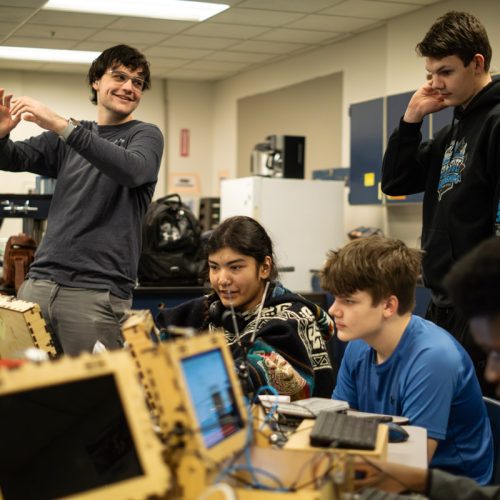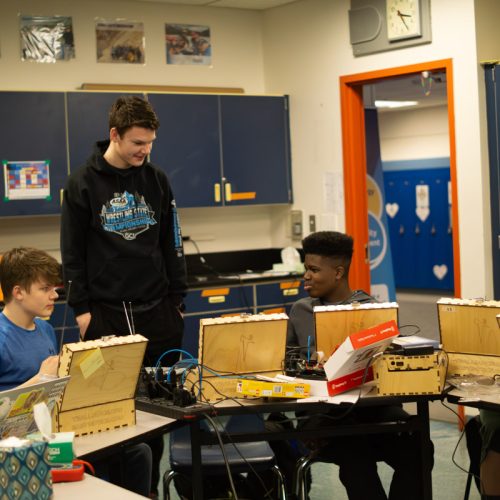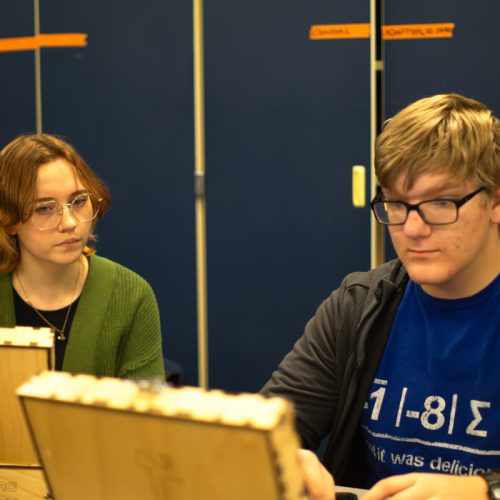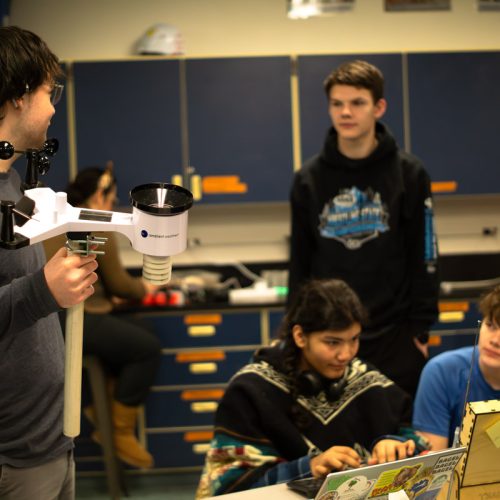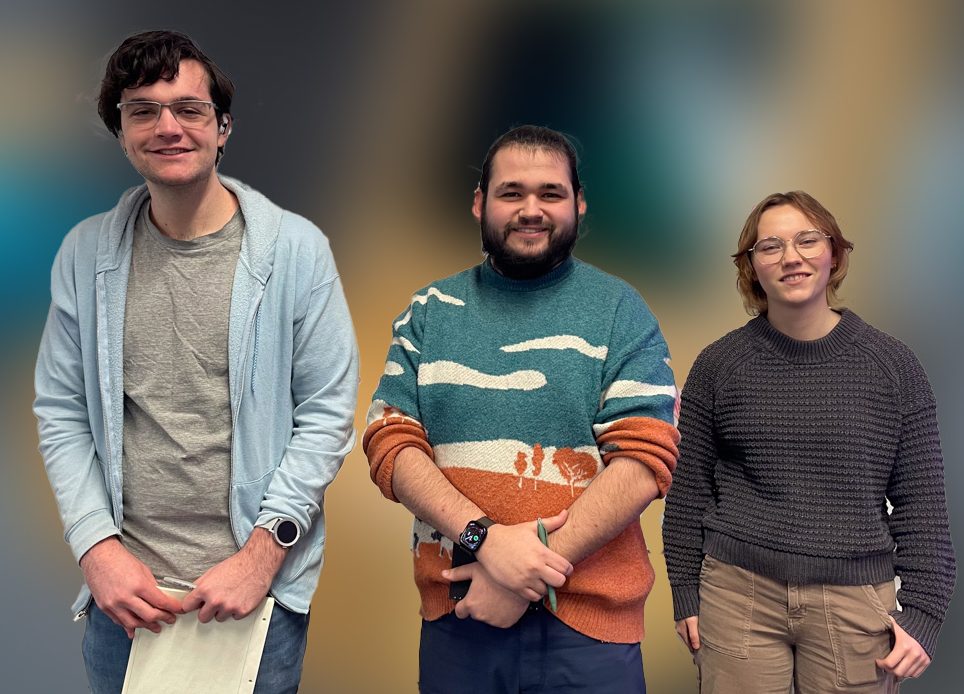
T3 Alaska Alumni “CyberPod” Develop Remote Sensor Kit
The Alaska Center for Energy and Power (ACEP) enlisted a group of T3 Alaska alumni to develop and submit URSA grant proposals. Three students (L-R)—Adrian Burke, a Computer Engineering major; Petie Deveer, a Computer Science major; and Hailey Hodgins, a Mathematics major — called the “CyberPod” successfully secured two grants. Their project focuses on designing a low-cost, high-performance, and reliable data transmission system tailored for remote locations in Alaska.
During a recent presentation to T3 Alaska staff and ACEP stakeholders, Hailey Hodgins outlined the project’s goals and challenges. The primary objective is to ensure reliable data transmission in remote areas with limited cellular connectivity and power sources. The system must be easy for high school students to deploy and maintain, cost-effective, and compatible with existing T3 technologies like Raspberry Pi, Node-RED, and software-defined radios. To keep communication and networking costs low, the team is exploring open-source and open mesh network protocol solutions over expensive options like cellular data and satellite.
To simplify the integration of their selected solution into T3’s selected graphical programming language, Node-RED, Petie Deveer developed an open-source toolkit called PULSEtastic, now available on the UAF T3 GitHub. The toolkit streamlines data processing by removing excess header and footer information, making raw data more accessible. “I love keeping my work open source,” Deveer says. “It makes collaboration easy—anyone can use, modify, and share the code freely. Students can improve upon it, and I know some who are definitely better coders than me.”
Adrian Burke is evaluating costs, cold-weather performance, and ease of data access of different commercial sensor technologies for remote atmospheric monitoring in Alaska’s rural communities, focusing on weather data collection in extreme cold. He is testing two weather stations and various air quality sensors to assess their durability and exploring heated enclosures as a potential solution for preventing mechanical failures. In addition, he is creating system documentation to support curriculum for T3 Alaska high school students, incorporating transmission technologies that can be easily adapted into classroom learning. His work includes integrating radio chirping, which can be detected via software-defined radio (SDR) and processed in Node-RED, as well as utilizing Modbus, a widely used serial communication protocol in professional energy meters and commercial sensors used in utility and industry settings.
As part of their ongoing development, the CyberPod traveled to North Pole High School on February 6 to host a workshop, testing their toolkit and guides with students. Recently, North Pole students earned their Raspberry Pi programming badges, making them well-prepared to engage with the new technology. The session provided an opportunity for hands-on learning with the sensor technology and data transmission methods the team has developed for remote atmospheric monitoring.
“I think they’re at a really good point to test this for us,” Burke said. “They are learning to use new tools, but also helping to identify bugs, hardware issues, and areas that need to be documented.” The workshop allowed students to apply their coding skills while providing valuable feedback to refine the curriculum before wider implementation in T3 Alaska programs.
The broad applicability and direct relevance to multiple research and education efforts has allowed this work to be supported by the URSA program along with programs at ACEP and UAF CEM: UAF Upward Bound Program, funded by the Dept. of Education; ARCTIC Program, funded by the Department of the Navy, Office of Naval Research under ONR award number N00014-22-1-2049; and Project STORM, funded by National Science Foundation EPSCoR (RII Track-2 FEC) award number (FAIN) 2316402;


